

Damion Smy
GWM Cannon Alpha ute, Tank 300 HEV and Tank 500 recalled
15 Hours Ago
The last Kona Electric was a bit of an EV pioneer. The new one has taken a big step forward, although the Premium isn't necessarily the pick.
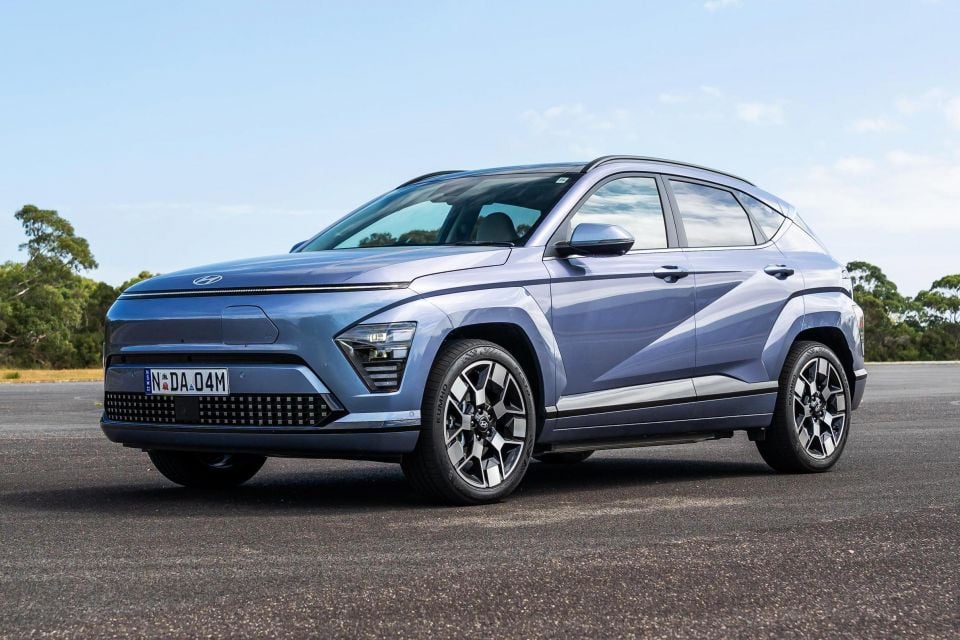
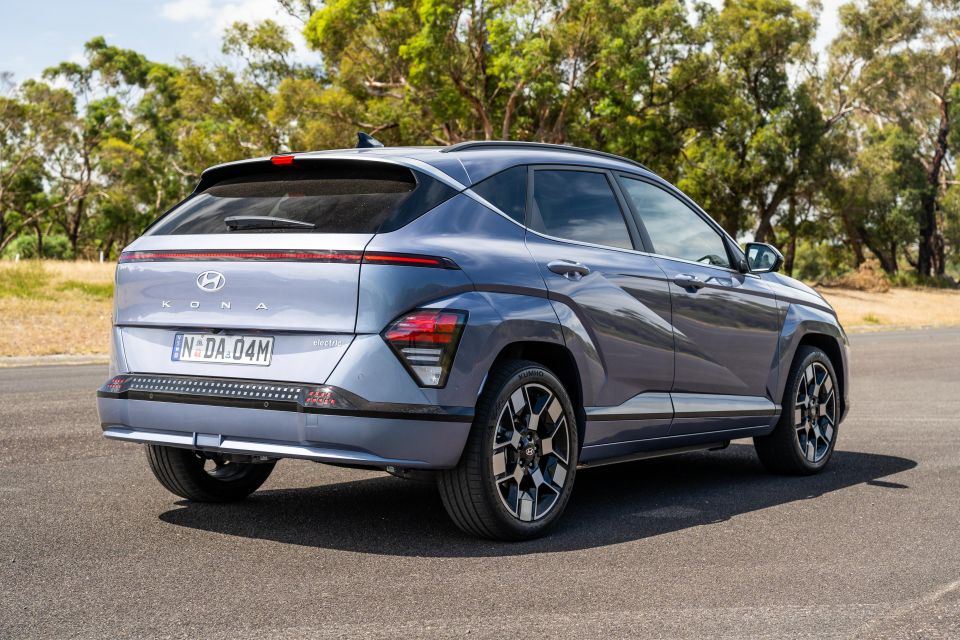

Quickly see how this car stacks up against its competition. Select any benchmark to see more details.
Where expert car reviews meet expert car buying – CarExpert gives you trusted advice, personalised service and real savings on your next new car.
The Hyundai Kona Electric has grown up.

Note: This article is based on our most recent review of the Kona, as a new vehicle isn’t available for us to test and there have been no major changes to specifications since its publication.
Hyundai Australia recently announced MY25 changes for the Kona line-up, with the biggest change being the availability of the N Line Package for Kona Electric models.
We have updated key details such as pricing and specifications with the most up to date information available, and added imagery of the latest model where applicable.
Read the latest price and specs article here for details of the MY25 ICE and Hybrid range, and here for the Electric.
WATCH: Paul’s video review of the 2024 Hyundai Kona Hybrid N Line
The first-generation Hyundai Kona Electric was early to the electric car party in Australia, but it has recently been overtaken by newer rivals offering more refined driving experiences, more modern interior technology, and more space.
That’s where the second-generation car tested here comes in. Like the petrol and hybrid Kona with which it shares its bones, the Electric is designed to offer more space, up-to-date technology, and a more polished drive than its predecessor.
Despite all those steps forward, it hasn’t been smacked with a monster price hike.

The base Kona Electric is actually $500 cheaper than the car it replaces, although the top-end Premium Extended Range on test here is $4000 more expensive than its now-defunct equivalent.
Does the new Kona Electric represent a great leap forward, or is it an incremental upgrade to the old model?
You pay a healthy premium to get your hands on the Premium Extended Range. It’s $10,000 pricier than the base Extended Range.
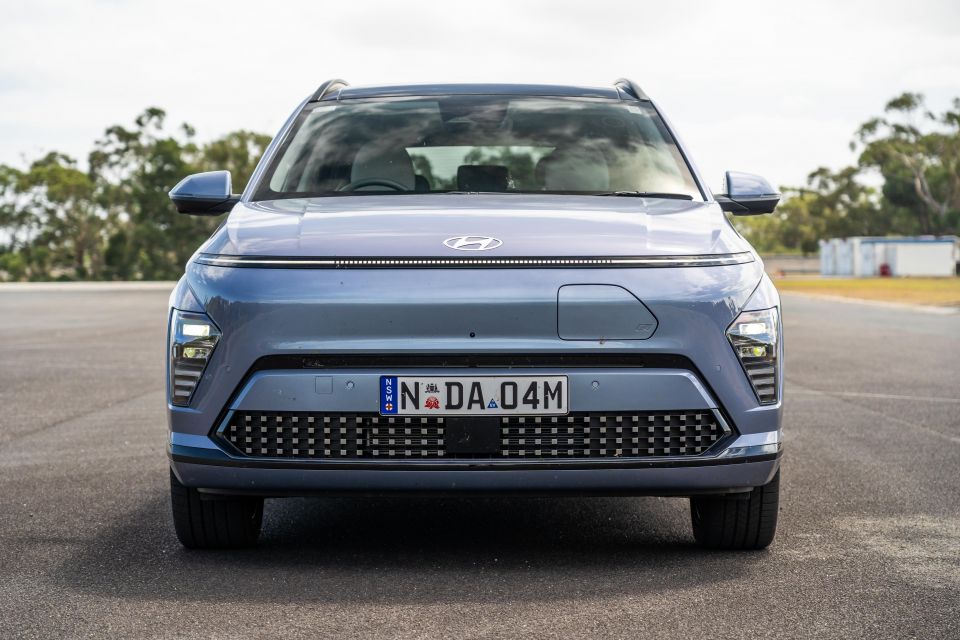
MY25 Kona + Kona Hybrid
| Model | Price before on-road costs |
|---|---|
| 2025 Hyundai Kona 2.0 petrol | $32,500 |
| 2025 Hyundai Kona 1.6 Hybrid | $36,500 |
| 2025 Hyundai Kona N Line 2.0 petrol | $36,500 |
| 2025 Hyundai Kona N Line 1.6 Hybrid | $40,500 |
| 2025 Hyundai Kona N Line 1.6T AWD | $40,500 |
| 2025 Hyundai Kona Premium 2.0 petrol | $39,500 |
| 2025 Hyundai Kona Premium 1.6 Hybrid | $43,500 |
| 2025 Hyundai Kona N Line Premium 2.0 petrol | $42,500 |
| 2025 Hyundai Kona N Line Premium 1.6 Hybrid | $46,500 |
| 2025 Hyundai Kona N Line Premium 1.6T AWD | $46,500 |
MY25 Kona Electric
| Model | Price before on-road costs |
|---|---|
| 2025 Hyundai Kona Electric Standard Range | $54,000 |
| 2025 Hyundai Kona Electric Extended Range | $58,000 |
| 2025 Hyundai Kona Electric N Line Extended Range | $62,000 |
| 2025 Hyundai Kona Electric Premium Extended Range | $68,000 |
| 2025 Hyundai Kona Electric N Line Premium Extended Range | $71,000 |
To see how the Hyundai Kona stacks up against its rivals, check out our comparison tool
Buy your new car without the stress. It's fast, simple and completely free.

Great service from Travis and team, second time I have used this business would not hesitate to recommend them to anyone
Craig C.
Purchased a Ford Ranger in Sunshine Coast, QLD
CarExpert helped Craig save thousands on his Ford Ranger, now let us save you on your next new car.
Find a dealGone is the flight-deck-like transmission tunnel of the old Kona, replaced by a clean and modern design shared with high-end petrol and hybrid models. It makes the cramped previous-generation model feel very dated.
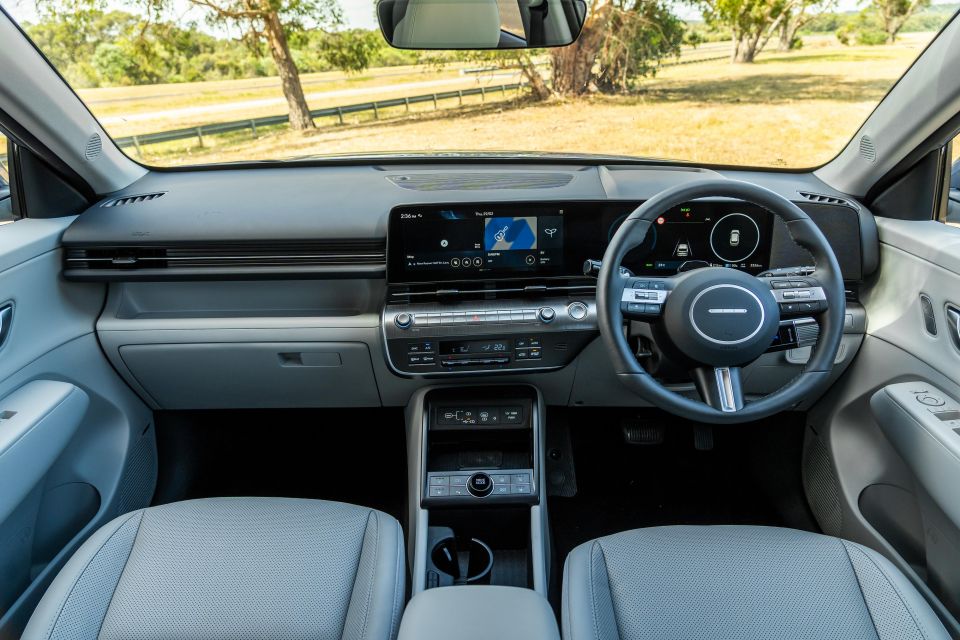
Presentation is impressive across the range, and the fundamentals are solid. The Premium elevates itself with white leather-clad seats (heated and cooled, naturally), ambient lighting, and a posh-looking cloth knit headliner.
The front seats are comfortable on long hauls and offer a broad range of adjustment, allowing tall or short drivers to get comfortable, while the view over the bonnet is more ‘shrunken Tucson‘ than ‘overgrown i30‘ as was previously the case.
Hyundai has also realised that buttons aren’t the enemy, which makes the Kona cabin much easier to navigate. It’s easy to flick into Sport, for example, or knock the temperature up by one degree without taking your eyes off the road, as should be the case.
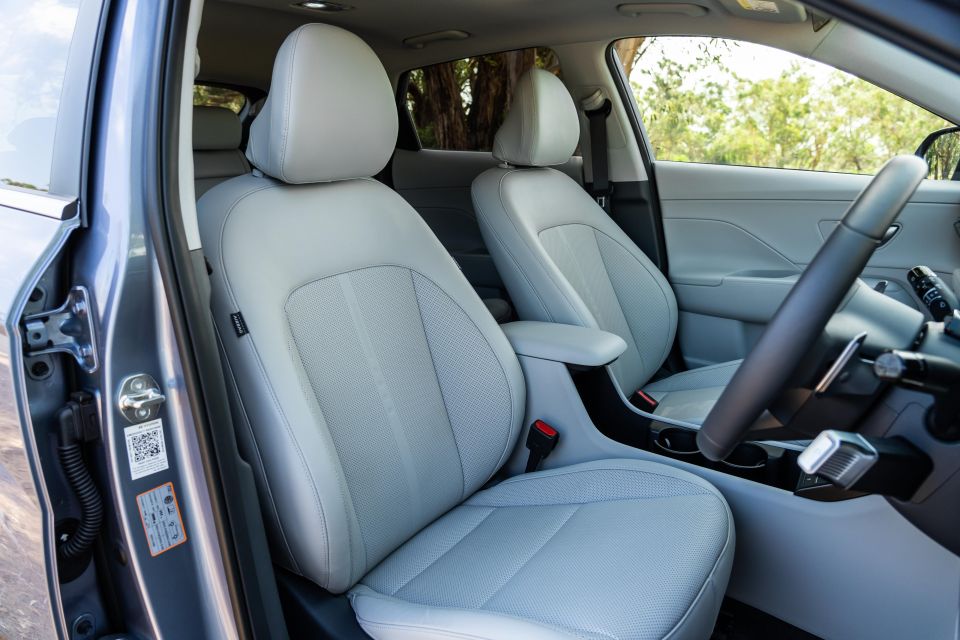

The infotainment software (which is now rolling out across the broader range) is easy to use, and touches like having the shortcut buttons in the bottom right-hand corner of the screen instead of the top left make life easier in right-hand drive Australia.
Wireless Apple CarPlay and Android Auto are rolling out on some Hyundai models with built-in navigation. It was missing from the new Kona at launch, and is currently being rolled out with an update to cars locally.
Hyundai’s digital dashboard is clean and functional, but it’s not particularly feature-rich relative to what you get in a Volkswagen Group product – you can’t have maps in your driver’s display, for example.

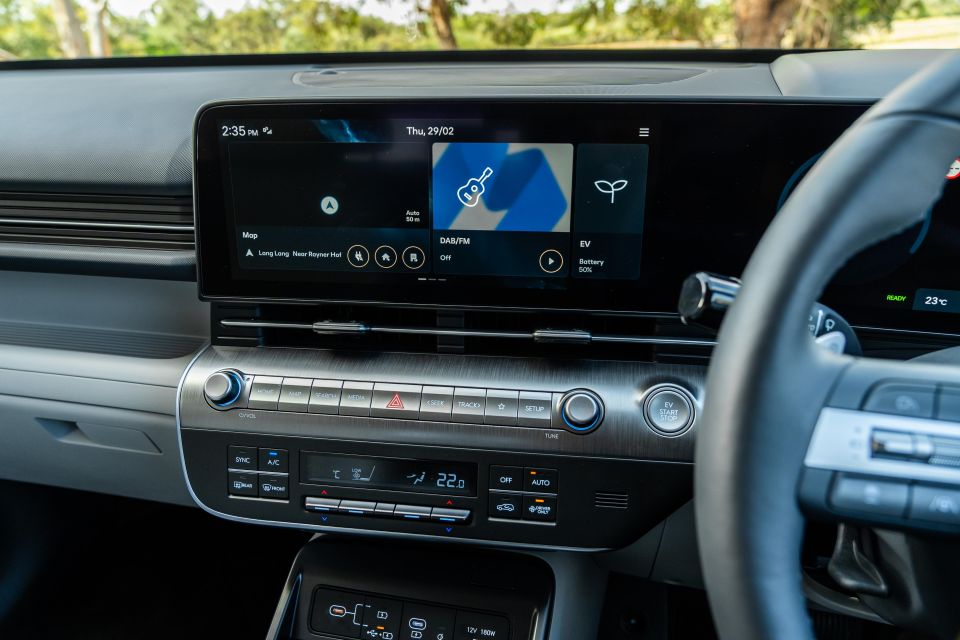
The flipside? There’s still lots of cheap, hard plastics, from the sides of the dashboard to the tops of the doors.
We called it out in the petrol variant, and it’s more conspicuous here given the Electric Premium is more expensive again. It’s pricier than a base Ioniq 5, which has a more grown-up interior design. Then again, we’d take hard plastics over some of the weirdness in the Kona’s rivals from China.
But rear seat space is miles better in this Kona than the last, starting with the wider-opening doors.
Adults don’t need to contort themselves to squeeze in anymore, which is a step forward, and once back there you get levels of legroom and headroom comparable to a Kia Seltos or BYD Atto 3.

The air vents and USB-C ports are family-friendly touches, and the broader rear bench will keeping warring kids at bay more effectively than before.
You even get a V2L three-pin outlet back there in the rear, allowing passengers to charge a laptop on the move.
The last Kona EV felt very compromised, with a higher floor than the petrol equivalent, forcing passengers into an awkward knees-up position.
The new model has more toe-room under the front seats, and won’t make long-legged passengers feel nearly as cramped.

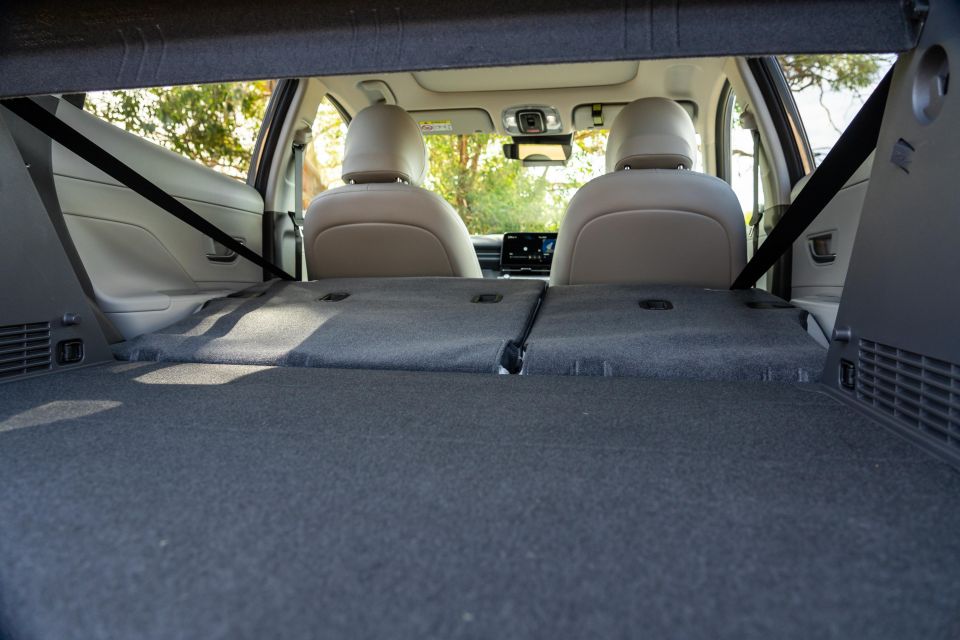
ISOFIX anchors on the outboard seats and a trio of top-tether points are present, as is a fold-down central armrest.
Claimed boot space is a claimed 407 litres (up 75L on the old car, down 132L on the petrol Kona), expanding to 1241 litres with the rear seats folded. There’s space for charging cables under the bonnet in a 27L storage space.
Rural buyers will also be happy to know there’s a space-saver spare wheel beneath the boot floor, which is rare in electric cars.
| Dimensions | Hyundai Kona |
|---|---|
| Length | 4350mm (4385mm N Line |
| Height | 1585mm – Kona Hybrid 1590mm – Kona |
| Width | 1825mm |
| Wheelbase | 2660mm |
| Boot space (VDA) | 407L (rear seats up) 1241L (rear seats folded) |
To see how the Hyundai Kona stacks up against its rivals, check out our comparison tool
Where the last Kona Electric offered 395Nm of torque, the new one delivers just 255Nm. Hyundai says that’s still more than enough, and the change was made to improve driveability.
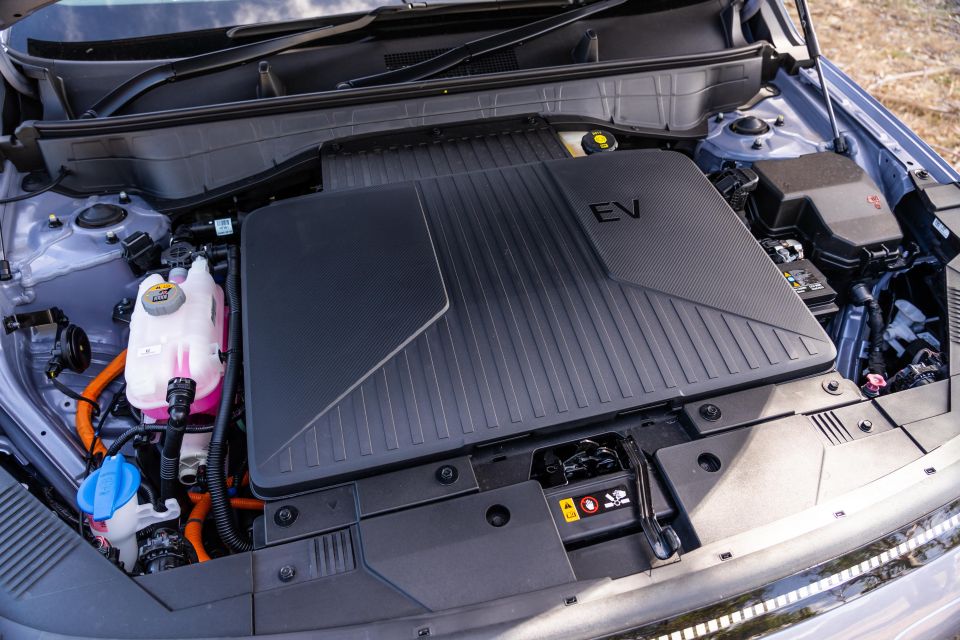
| Model | Hyundai Kona Electric Extended Range |
|---|---|
| Drivetrain | Single-motor electric |
| Battery | 64.8kWh lithium-ion |
| Power | 150kW |
| Torque | 255Nm |
| Driven Wheels | Front-wheel drive |
| Weight | 1698kg |
| Energy efficiency (as tested) | N/A |
| Claimed range | 444-505km |
| Max AC charge rate | 10kW |
| Max DC charge rate | 100kW |
Having lived with a previous-generation Kona Electric for a while, we can say that’s no bad thing. It was prone to torque steer, and could never really put all that torque down to the road without feeling a bit wild.
To see how the Hyundai Kona stacks up against its rivals, check out our comparison tool
The Kona Electric isn’t targeted at the sort of person who wants their electric car to feel like a spaceship.
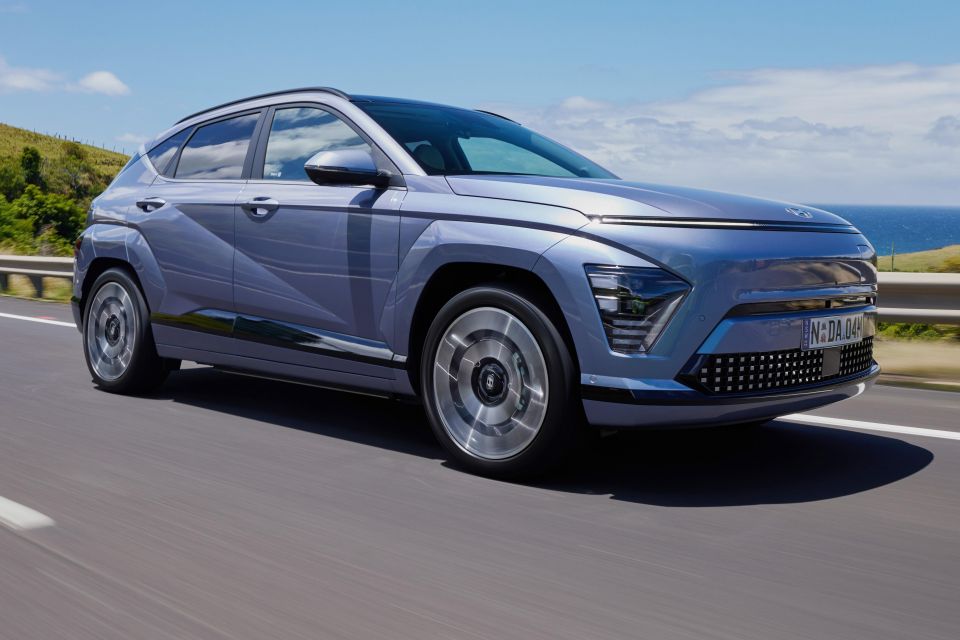
It’s remarkably unremarkable, requiring a flat learning curve for anyone hopping out of a petrol or diesel car. It felt that way during our shorter launch drive, and it feels that way with more seat time.
Even in the more powerful Extended Range, the way it performs in the city is in keeping with the more expensive petrol 1.6-litre turbo engine. There’s no wheel spin or torque steer – both of which were real issues in the old Kona Electric. It just gets on with the job, backed by a subtle hum from the motor.
The steering is light, and even the more grown-up body is small enough to easily squeeze into parking spots or through tight laneways. It feels at home in the city, where you can lean on the instant low-down torque to squirt away from the traffic lights faster than most internal-combustion cars.
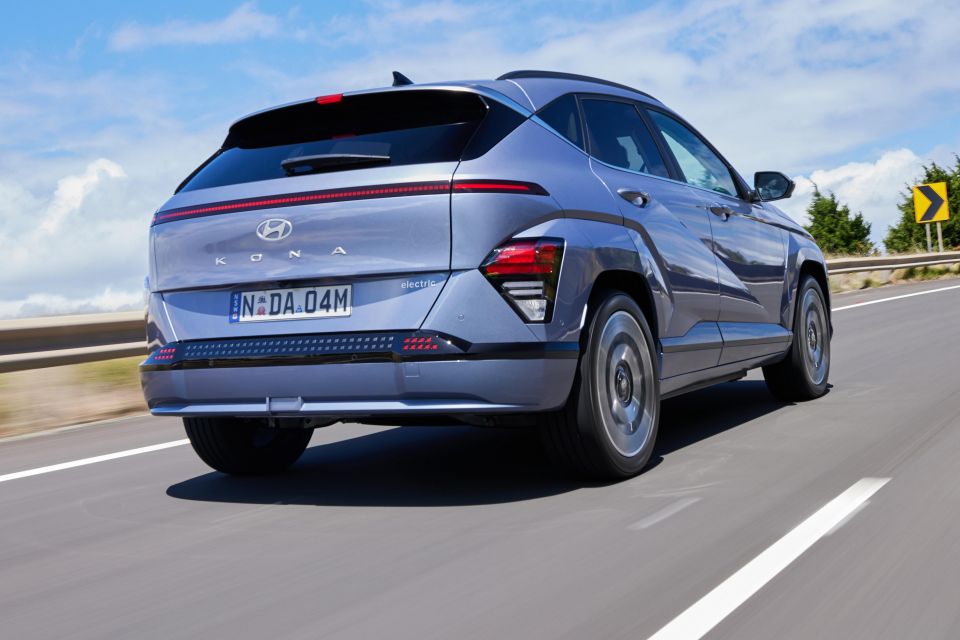
Hyundai’s regenerative braking has been improved in the transition from the original to the second-generation Kona Electric. It’s smoother to engage when you lift off at speed, and you’re now able to use Hyundai’s i-Pedal to avoid the brake pedal around town.
It’s silly that you still need to activate one-pedal driving every time you start the car though; the highest level it’ll default to still requires the driver puts their foot on the brake pedal to stop.
Will owners bother with the regenerative braking? Given this is meant to be an electric car for people who don’t want to drive a science experiment, maybe they won’t.
Hyundai hasn’t chased a sporty feeling here, instead opting for a relaxed suspension tune. It floats over speed bumps and potholes, although you’re always aware of the car’s weight.
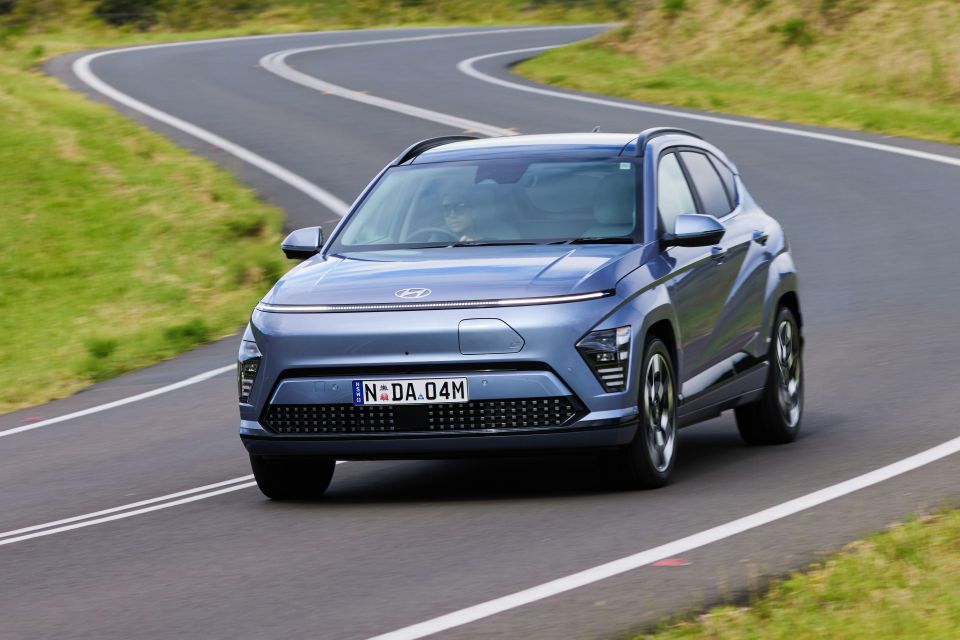
1700kg isn’t morbidly obese by electric car standards, but it still weighs around 180kg more than a fully-loaded Kona N Line Hybrid and that’s hard to ignore.
On smooth highways, the Kona Electric feels quite grown up. There’s minimal wind and road noise, and there’s enough performance from the electric motor to have punch in reserve for overtaking at the legal limit.
But the soft suspension and chunky kerb weight figure conspire to make this quite a bouncy car over big highway crests and dips, taking one, two, sometimes three movements to control its mass. When the road gets interesting you can really throw the Kona Hybrid around; the Electric doesn’t enjoy being pushed hard.
The adaptive cruise control does a good job of maintaining a gap to the car in front, and the lane-keeping assist decisively nudges you back between the white lines if you stray.
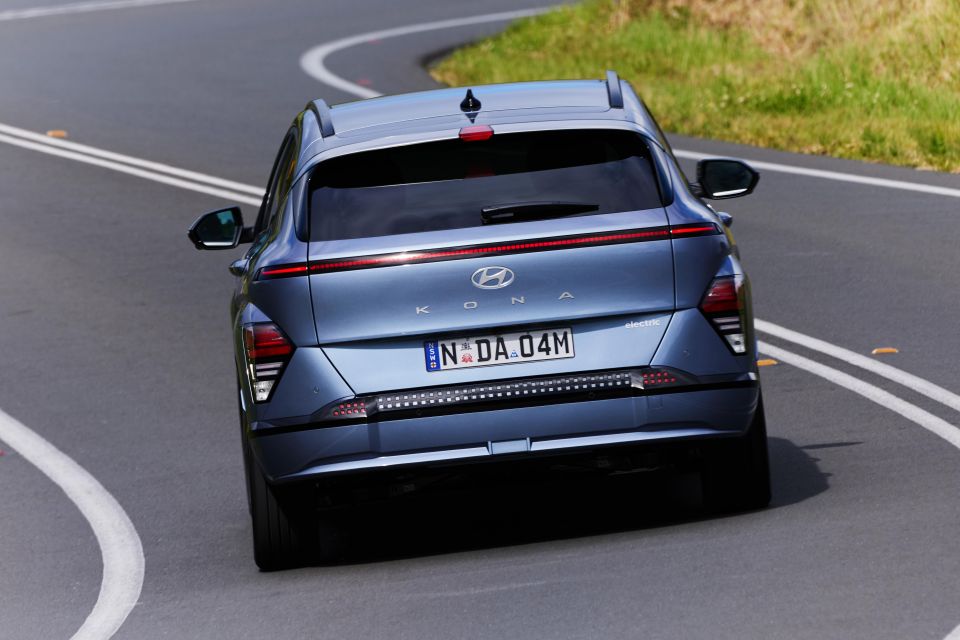
Where expert car reviews meet expert car buying – CarExpert gives you trusted advice, personalised service and real savings on your next new car.
Hyundai’s lane-centring system, which more actively controls the car’s position in the lane rather than intervening when you stray towards lines, is a bit too hands-on for our liking, though.
The driver attention monitoring is prone to false positives, flashing when you actually are looking at the road… which makes you look away. More refinement is needed, as is the case with the speed limit warning system.
Yes, it’s a European requirement. It’s also so deeply annoying, I would be rooting around online to try and work out a way to turn it off through the OBD II port.
To see how the Hyundai Kona stacks up against its rivals, check out our comparison tool
The 2024 Hyundai Kona Electric is available in two different trim levels – on test here is the flagship Premium variant.
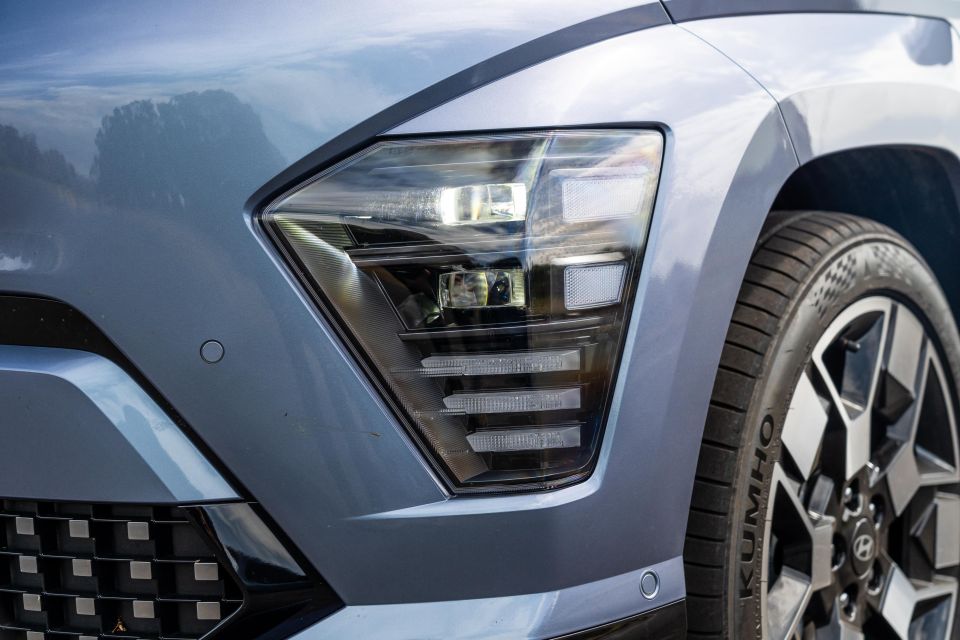

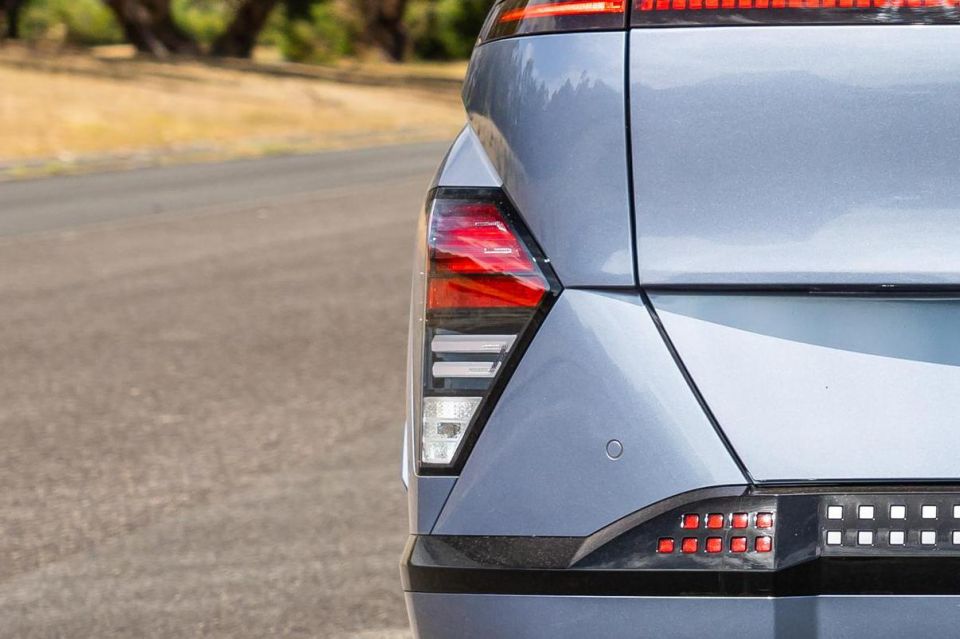
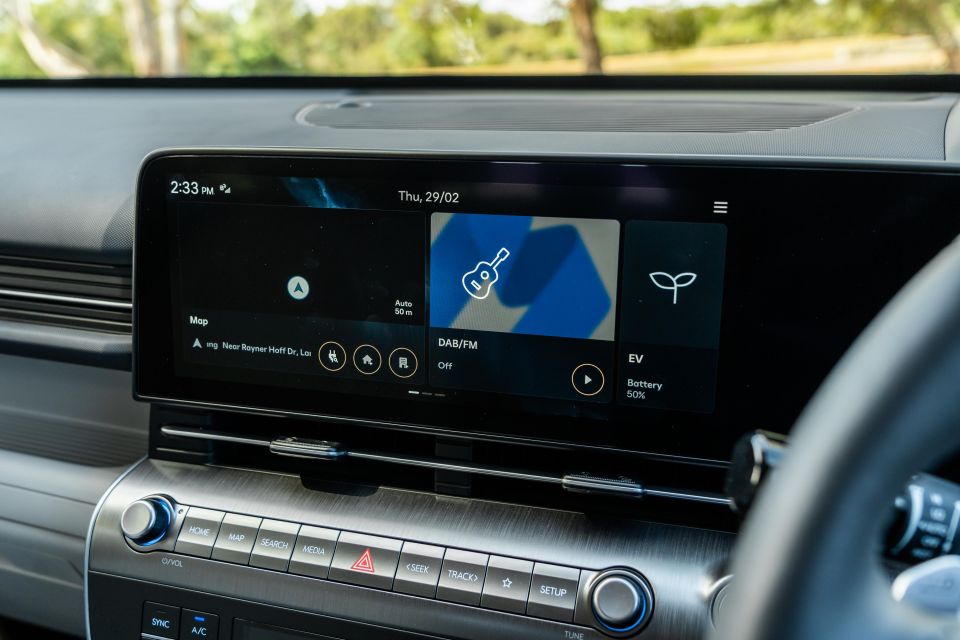
Kona Electric (Base) highlights:
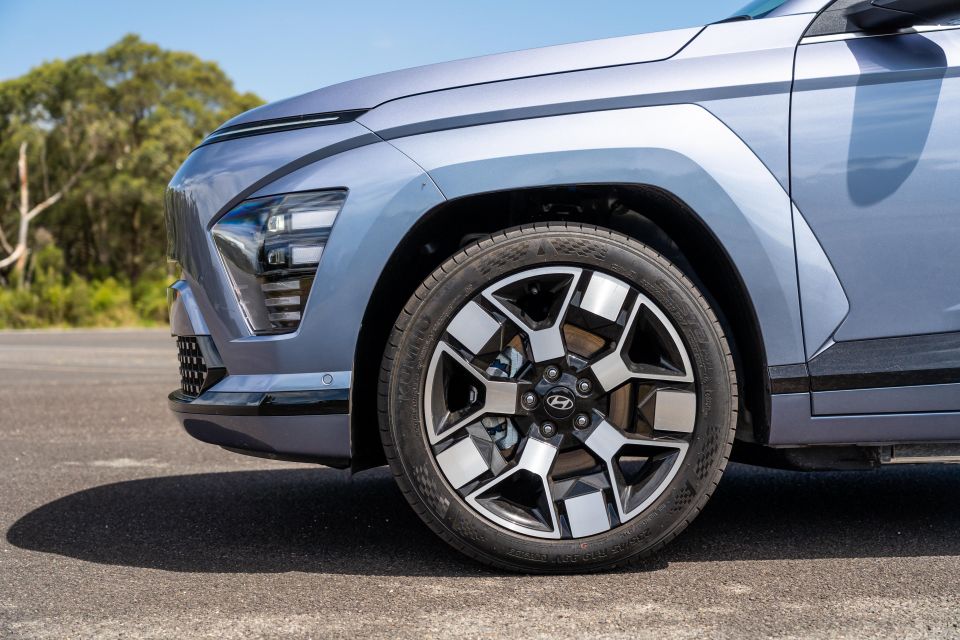

Kona Electric Premium adds:
All Hyundai Kona Electric variants also come standard with a five-year subscription to Bluelink connected car services.
Available functions include:
To see how the Hyundai Kona stacks up against its rivals, check out our comparison tool
The new Kona recently received a four-star ANCAP safety rating, based on tests conducted by Euro NCAP.
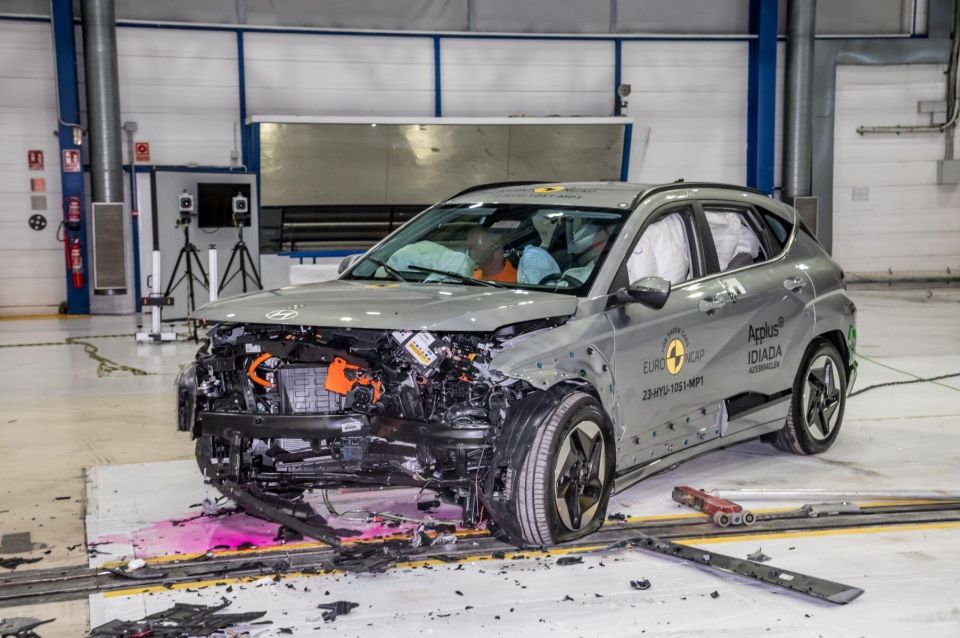
| Category | Hyundai Kona |
|---|---|
| Adult occupant protection | 80 per cent |
| Child occupant protection | 83 per cent |
| Vulnerable road user protection | 64 per cent |
| Safety assist | 60 per cent |
It received 80 per cent for adult occupant protection, 83 per cent for child occupant protection, 64 per cent for vulnerable road user protection, and 60 per cent for safety assist.
To get a five-star rating overall, a car needs to receive scores of above 80 per cent in adult and child occupant protection and above 70 per cent for vulnerable road user protection and safety assist.
Standard safety features include:
Kona Electric Premium adds:
The Hyundai Kona Electric is covered by a five-year, unlimited-kilometre warranty, while its high-voltage battery pack is covered by an eight-year, 160,000km warranty.
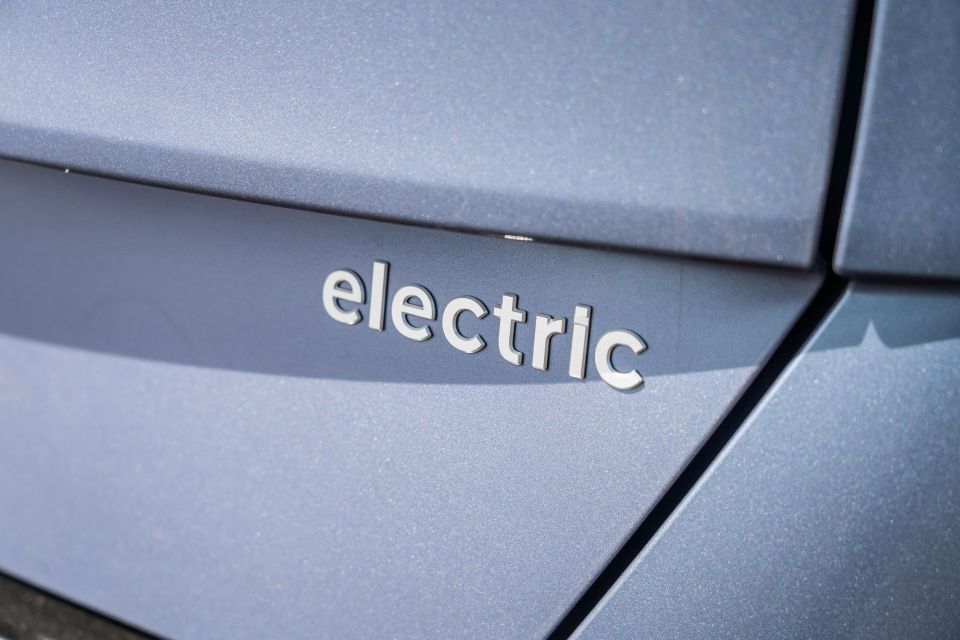
Logbook servicing is required every 24 months or 30,000km, whichever comes first. The first three services are also capped at $520.
| Running costs | Hyundai Kona Electric |
|---|---|
| Warranty | 5 years, unlimited kilometres – vehicle 8 years, 160,000 kilometres – EV battery |
| Roadside assistance | Lifetime – service activated |
| Service intervals | 24 months or 30,000km |
| Capped-price servicing | Lifetime |
| Total capped-price service cost | $1040 – 4 years or 60,000km pre-paid |
To see how the Hyundai Kona stacks up against its rivals, check out our comparison tool
The Kona Electric is a solid stepping stone from petrol to electric power in a small SUV.
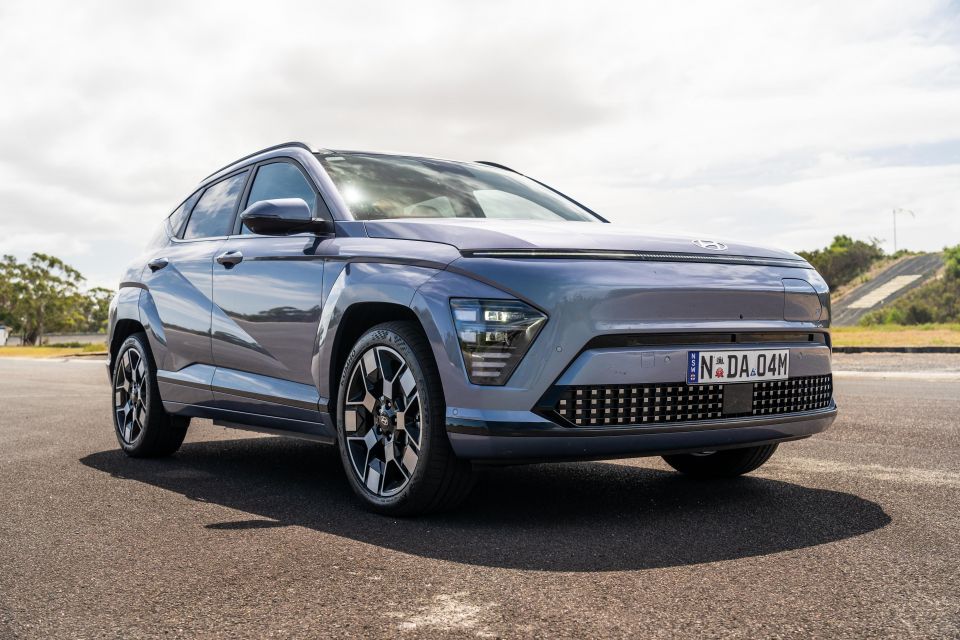
Where some of its rivals go out of their way to be different, the Kona is reassuringly conventional in how it goes about its business.
It’s also improved significantly over the first-generation car, which had trouble taming its torque, was tight in the back seats and boot, and expensive alongside its better-rounded rivals.
You can feel a but coming, right? We don’t know that the Electric Premium makes all that much sense, given how well equipped the base Extended Range is for $10,000 less.
It’s nicer inside, and the extra camera hardware and safety kit is unquestionably welcome, but the Extended Range is incredibly well rounded.
There’s no reason not to buy the Premium if you really want the extra kit, but it’s worth looking closely at the bigger Ioniq 5 given it’s actually $3000 cheaper if you do have closer to $70k to spend on an electric Hyundai SUV.
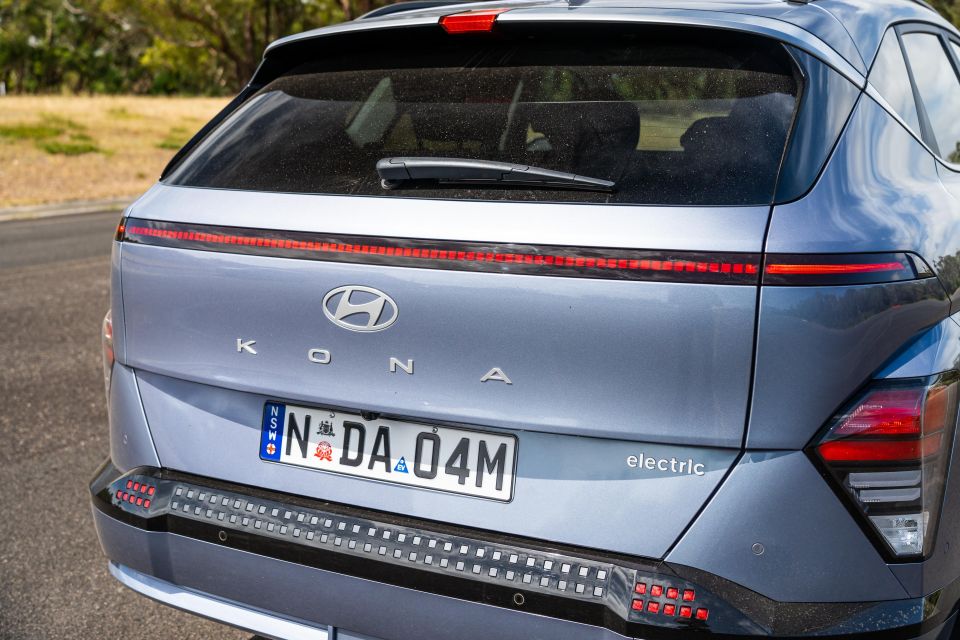
Interested in buying a Hyundai Kona? Get in touch with one of CarExpert’s trusted dealers here
Click the images for the full gallery
MORE: Everything Hyundai Kon
Where expert car reviews meet expert car buying – CarExpert gives you trusted advice, personalised service and real savings on your next new car.
Scott Collie is an automotive journalist based in Melbourne, Australia. Scott studied journalism at RMIT University and, after a lifelong obsession with everything automotive, started covering the car industry shortly afterwards. He has a passion for travel, and is an avid Melbourne Demons supporter.


Damion Smy
15 Hours Ago


William Stopford
17 Hours Ago


Matt Campbell
1 Day Ago


William Stopford
2 Days Ago


CarExpert.com.au
5 Days Ago


Damion Smy
5 Days Ago